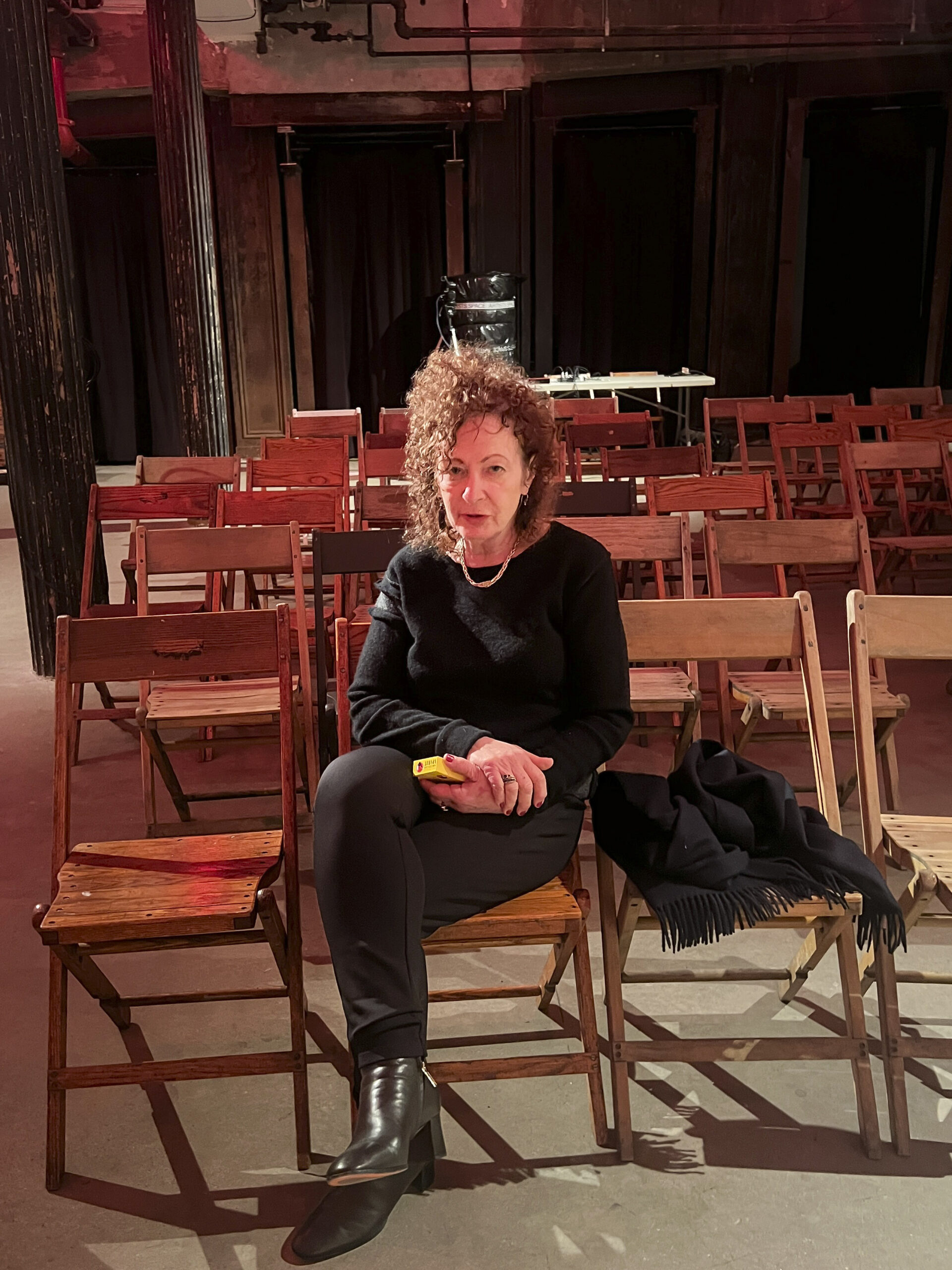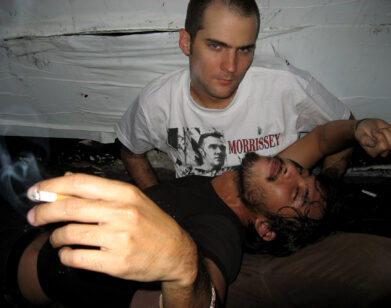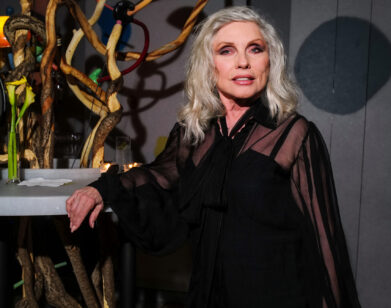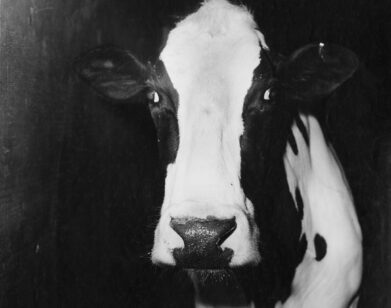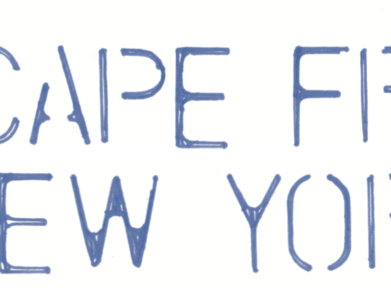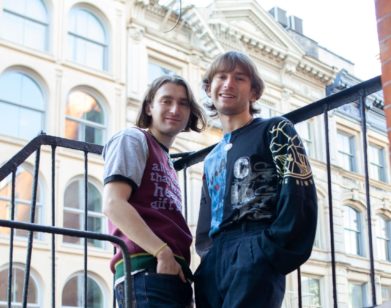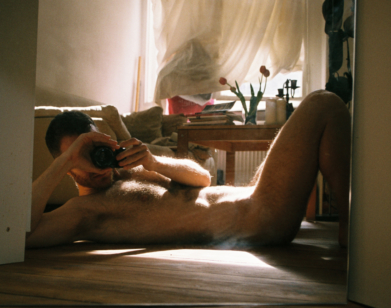ICON
Nan Goldin on Vaping, Orgasms, and Greek Myths
“One of the greatest things she ever told me was that she was lucky enough to experience an orgasm as both a boy and a woman,” Nan Goldin says with a grin, of her late friend, Greer Lankton, as we chew Nicorettes in the office of Artists Space. Lankton, a trans woman who received gender-affirming surgery in 1979 funded, miraculously, by her father’s church, was a key fixture in the downtown art world in the 80s, beloved for her life-like dolls. She and Goldin lived together in Goldin’s Bowery loft—a bastion for artists and the backdrop to Goldin’s magnum opus, The Ballad of Sexual Dependency (1985).
Since the 80s, Goldin has been working hard. Last year, the Laura Poitras-directed documentary about her life, All the Beauty and the Bloodshed, was nominated for an Oscar. At the same time, her six-room retrospective, and nine volume box-set, This Will Not End Well, opened at Moderna Museet, Stockholm, which continues to travel internationally. Last Thursday night, in celebration of the posthumous publication of Sketchbook September 1977, Goldin read from the collection of Lankton’s journal entries filled with acute insights on gender and art. Afterwards, I followed her into a quiet office where we talked about vaping, orgasms, Peter Hujar, and why she ditched the downtown galleries for Times Square.
———
NAN GOLDIN: Nicorette is not the way to go.
ELOISE KING-CLEMENTS: I’ve never had a Nicorette.
GOLDIN: You want to try it?
KING-CLEMENTS: Sure. Can you smoke and have a Nicorette at the same time?
GOLDIN: No, you can’t. That’s deadly, evidently. I do it, but it’s not okay.
KING-CLEMENTS: My first Nicorette is with Nan Goldin.
GOLDIN: The first bite feels good. It goes downhill fast.
KING-CLEMENTS: Really?
GOLDIN: Yeah. But the first rush of nicotine—have you ever used the patch?
KING-CLEMENTS: No.
GOLDIN: I learned that that’s the secret to flying long distances because I always spend the whole time sneaking to the bathroom and vaping.
KING-CLEMENTS: What kind of vape do you use?
GOLDIN: It’s called Fix. There are only a few places they sell them, unfortunately. It’s just tobacco in it. It’s actually often tastier than a cigarette.
KING-CLEMENTS: Wow. Very sleek. Well, thank you for making the time, first of all. GOLDIN: Thanks for waiting.
KING-CLEMENTS: Do you mind talking about the first time you saw the sketchbook? Were there any surprises? I’m sure it was very emotional.
GOLDIN: It was a real surprise to me. I’m sure there’s diaries from when she lived with me, but I had no idea of the depth of her perception. It’s shockingly deep for a person at 19. I knew she was that sensitive, but I didn’t really understand her level of self-talk. I wasn’t aware of that in her, so it’s a real gift to have this other key to Greer.
KING-CLEMENTS: And you guys were roommates for two years?
GOLDIN: She moved into the Bowery, yeah. I had a place there that a lot of people lived in and out from ’78 to ’98. I moved out, and I went to Europe, and I kept it as my studio, and I lost it about eight years ago. So I had it for 35 years, or something. But it didn’t have any windows. It was completely dark, so it wasn’t like the idea of a loft. It was kind of a pit, but it was good.
KING-CLEMENTS: Who was your first roommate there?
GOLDIN: I moved in with a woman named Janet from Boston. She knew Greer from Chicago. When we went out to Chicago that year, she tried to reach Greer to introduce us. That’s when Greer was in the hospital, so I already knew about her.
KING-CLEMENTS: And what was it like living with her?
GOLDIN: She worked constantly. The house was full of dolls, which was wonderful. She tried to kill herself once. I was working at a bar in Times Square and she came up to visit me, and I think it was a really bad experience for her. It was a very working class bar. There wasn’t much tolerance for gay or trans people there.
KING-CLEMENTS: And you were her wedding photographer.
GOLDIN: Mm-hmm.
KING-CLEMENTS: How was the wedding?
GOLDIN: I don’t remember. We’re talking 30 years ago, so I don’t pretend to remember what I don’t remember. But she looked gorgeous. That I remember. She looked absolutely divine, like a picture bride, really.
KING-CLEMENTS: A lot of your work is about the family you create with friends. Are there certain qualities that you notice over and over again amongst your friends?
GOLDIN: Yeah, of course. I don’t know if I can put that into words. I just know if I connect with someone, I know if they interest me. But my friendships are much closer and more insular now. It’s people I’ve known for a long time. People who work with me are very close. One of my assistants is one of my best friends, and we’ve worked together for 10 years. Because I love to work, I work with people I love.
KING-CLEMENTS: Are you working a lot?
GOLDIN: I just opened a retrospective, and I just finished a nine-volume box set of my books. So yeah, always. It’s what keeps me alive, working. I love to work. It’s such a luxury to love your work. Most of the world does not love their job, so I feel very lucky.
KING-CLEMENTS: And does work involve taking photos now, or is it more putting things together?
GOLDIN: Very rarely. I’m using my archive. It involves tens of thousands of photos, but I don’t go out and shoot much. Occasionally. I photograph the sky. I joined the Cloud Watchers Appreciation Society.
KING-CLEMENTS: What is that?
GOLDIN: It’s a group of cloud watchers.
KING-CLEMENTS: Wow. Are you like, “Oh, that looks like a dog”? What’s it involve?
GOLDIN: [laughs] No, I don’t think it’s on that level. No, that’s great, they just send pictures around of beautiful clouds and they travel. But I’m not so deeply involved. I should get back to that. I wanted to tell this story about Greer that I forgot.
KING-CLEMENTS: Please do.
GOLDIN: A couple stories. One of the greatest things she ever told me was that she was lucky enough to experience an orgasm as both a boy and a woman.
KING-CLEMENTS: That is great. Any more details?
GOLDIN: A woman was much, much better than a man.
KING-CLEMENTS: Well, that’s great.
GOLDIN: I mean, we know that. Think about it.
KING-CLEMENTS: We probably do know that, yeah.
GOLDIN: I’m working on Ovid’s “Metamorphoses.” It’s mythology written by this Roman poet that’s a genius. It’s one of the greatest books of all time, and it’s all these different myths, and one character is named Tiresias. There were two snakes fucking, and he killed them with a stick. One of the main gods got mad and turned him into a woman, and he spent seven years as a woman, and then he was allowed to go back to his original sex. He was asked what was better, a male orgasm or a female orgasm, and he said a woman by 10 times. That story is similar to what Greer told me, but in our times.
KING-CLEMENTS: What’s the piece you’re working on?
GOLDIN: I’m working on a piece called “Scopophilia.” It started in the Louvre, 2010. They invited me to come there and photograph for eight months when the museum was completely closed. I pair the pictures with my own work, and there’s a soundtrack that was recorded in the Louvre of mostly medieval music being sung. It’s a beautiful piece, and I’m redoing it, so I’m rereading the myths.
KING-CLEMENTS: Wow, I love that story.
GOLDIN: I do, too. The other story is, she was photographed by Peter Hujar and she was really nervous about it. But afterwards, she said that being photographed by him was like being made love to, which I think is beautiful.
KING-CLEMENTS: Wow.
GOLDIN: Yeah. She went through some dark times, though. She was the only trans person in the art world except Teri Toye, who she idolized. But she was the only one in the art world, and people respected her. But they found her a bit exotic because she was trans and there was no context for it, really. Also, she became anorexic.
KING-CLEMENTS: Were you worried at the time?
GOLDIN: Very. My god, yeah. It’s really touching tonight. It’s really moving. I wish she’d gotten this kind of attention when she was alive. She did have that show at Civilian Warfare, that was at the end of my slideshow.
KING-CLEMENTS: Yes, I saw that.
GOLDIN: When I moved to New York, there were no galleries. Of course, there were galleries with abstract expressionists and great photographers who took pictures of light. [But] there was no context for the art world in the circle that I was in. It started in the early ’80s, when Jean-Michel [Basquiat] was the first one to enter into that art world, and then I didn’t really enter into it until the late ’80s. There wasn’t really a gallery system in place. There were some galleries on the Lower East Side, like the Fun Gallery and Civilian Warfare, so artists like Peter Hujar and Greer were very well known among this circle, but it didn’t emerge into the larger landscape basically until they were dead.
KING-CLEMENTS: What was your relationship with the art world?
GOLDIN: I left. I went to Tin Pan Alley. I didn’t like the art world, so I went uptown and worked in a bar, a very tough bar, for five years. That was my escape from the art world.
KING-CLEMENTS: Because you liked the toughness?
GOLDIN: The art world felt really elitist and classist to me. It didn’t feel like real life. It is real life, it’s just a different life. I felt more attracted to people working in the sex trade and bikers and people working at the post office. I had all kinds of customers. Then the art world started coming up there to the bar.
KING-CLEMENTS: You drew them uptown?
GOLDIN: The woman who owned the bar, really, this incredible woman named Maggie Smith. Maggie was an amazing woman and she became interested in the art world, and so people started coming up to the bar. The Clash used to go there when they were in New York. It was an underground, kind of hip joint, but it was mostly working class. The regular patrons didn’t like the art world coming up.
KING-CLEMENTS: Has your relationship with the art world changed?
GOLDIN: Of course. In the ’80s, I had my first gallery. I worked with a man named Marvin Heiferman for many years. He was wonderful. But it was really outside the art world. Then, in ’89, he turned me over to Pace/MacGill Gallery, and so that was my first experience with a mainstream gallery. In ’92, I did something at the Whitney Biennial that got a lot of attention, and Matthew Marks and a couple of other big dealers came after me. I ended up going with Matthew for many, many years, and he introduced me to the art world. He took me to Venice and Documenta and I didn’t know any of that. We’re talking ’92, but I just didn’t know. Is that it?
KING-CLEMENTS: That can be it, yeah.
GOLDIN: What’s your name?
KING-CLEMENTS: My name is Eloise.
GOLDIN: Eloise? Like Eloise at the Plaza.
KING-CLEMENTS: That’s what I’m being for Halloween.
GOLDIN: I love that. Nice to talk to you.
KING-CLEMENTS: Very nice to talk to you.

